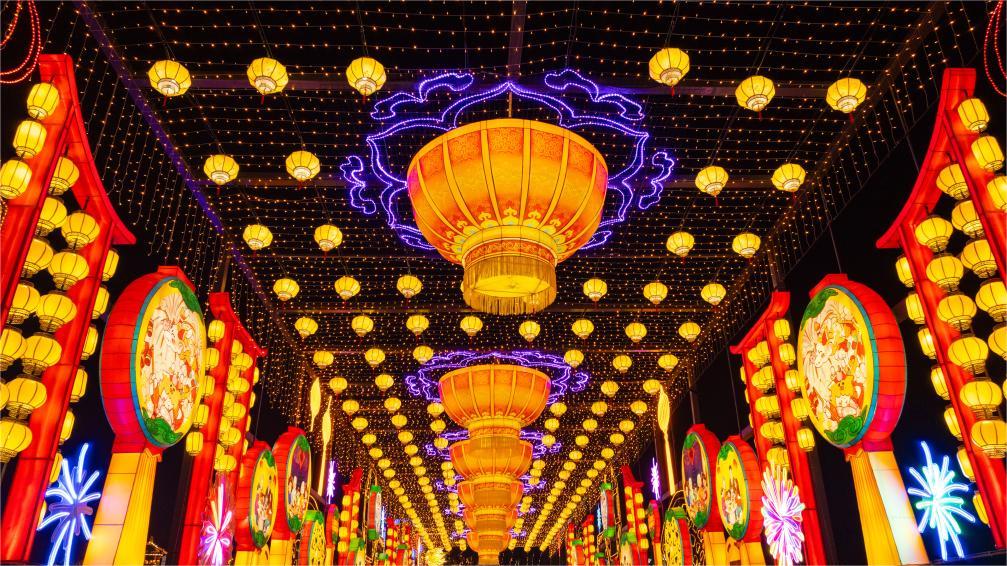Antique clocks from China's Palace Museum on exhibition in London
LONDON, Feb. 1 (Xinhua) -- An exhibition opened at the Science Museum in London on Thursday, featuring 23 resplendent mechanical clocks, called zimingzhong, on loan from the Palace Museum in Beijing.
The exhibition, titled "Zimingzhong: Clockwork Treasures from China's Forbidden City," will run through June 2. It invites visitors to discover the outward beauty and inner workings of these centuries-old timepieces, and their historic role in early cultural exchanges between Britain and China.
In the 1580s, western clocks entered China's interior from its southern coast, hence the country's history of clock collection and manufacture began.
According to the exhibition organizer, the mechanical clocks in this exhibition were known to the emperors of China as "zimingzhong", meaning "self-sounding bells" or "bells that ring themselves." Most zimingzhong would tell the time, move and play music when operated.
The Palace Museum has a collection of more than 1,600 Chinese and foreign clocks, dating from the 18th century to the early 20th century. These clocks were gathered in the Qing Palace through trade, presents given by foreign missions or organizations, and manufactured by the palace workshop, etc. Delicate works from Britain, France, Switzerland, Germany, the United States, Japan, and some other countries are included in the collection. The British clocks take the largest proportion of clock collection in the Palace Museum.
The 23 clockwork treasures, including works produced in both Britain and China, are displayed exclusively together in Britain for the first time.
On entering the exhibition, visitors will encounter the Moving Pagoda Zimingzhong, which dates from the 1700s and was made in London during the Qing Dynasty in China. The complex moving mechanism is brought to life in an accompanying video showing the nine delicate tiers slowly rise and fall.
Another piece is Temple Zimingzhong made by British watchmaker, James Upjohn, in the 1760s. His memoir on display provides insight into the work involved in creating its ornate figurines and delicate gold filigree.
Visitors can also explore how the detailed designs and mechanisms at the heart of zimingzhong represent a unique cultural exchange of ideas and skills.
According to Jane Desborough, keeper of science collections at the Science Museum, timepieces like Zimingzhong with a crane carrying a pavilion represent a very special meeting of cultures and technology. "Its intricate mechanism was made by British maker and retailer, James Cox, but the delicate outer casing and beautiful decorations were almost certainly made in China. "
"The rich collection of timepieces in the Forbidden City serves not only as a medium of contact between China and the western world, but also as a vehicle of cultural diversity: through a unique historical angle, it showcases over three centuries of communication, exchange and integration between China and the wider world," said Wang Xudong, director of the Palace Museum.
Ian Blatchford, director and chief executive of the Science Museum Group, said, "the flamboyant combination of design flair and mechanical precision exemplified in these three-hundred-year-old timepieces must be seen to be believed. We are deeply grateful to the Palace Museum in Beijing for entrusting us with these rare treasures from the Forbidden City."
Photos
Related Stories
- Exhibitions launched at Palace Museum shed light on Chinese, West Asian civilizations
- Exhibition of Iranian cultural relics kicks off at Palace Museum
- Palace Museum to launch exhibition on ancient China, West Asia interaction
- Nearly half of collections at China's Palace Museum undergo digitalization: official
- Tourists visit Palace Museum in snow in Beijing
Copyright © 2024 People's Daily Online. All Rights Reserved.









